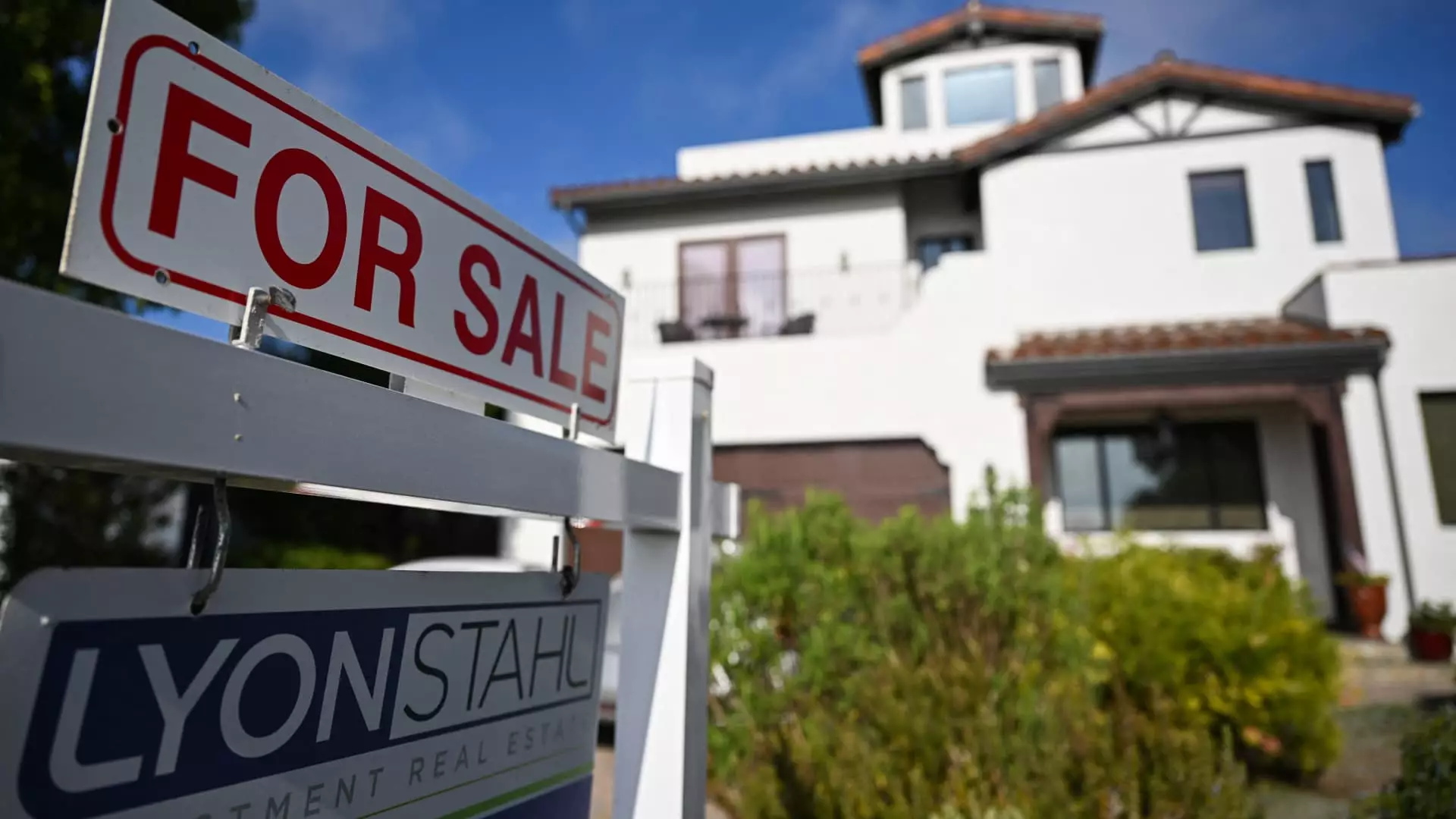Last Thursday’s unexpected decline in mortgage rates offered a brief glimmer of hope for potential homebuyers; however, this positive development, driven largely by external economic factors like the Trump administration’s recent tariff announcement, masks deeper, troubling realities about the housing market. The average rate for a 30-year fixed mortgage plummeted by 12 basis points to 6.63%, marking the lowest level since October. Yet, it’s essential to recognize that just because rates are falling doesn’t mean the market is on the mend—quite the opposite could be true. With investors fleeing to safer bond markets amidst stock market turmoil, the relevance of mortgage rates may feel diluted against the backdrop of increasingly unaffordable housing.
While the decline is indeed timely—falling neatly into the busy spring season for real estate—many buyers are facing insurmountable barriers. The average monthly mortgage payment has spiked to $2,802, the highest it has been in recent history. This exorbitant figure reveals a grim picture of affordability that contradicts the optimistic narrative surrounding lower rates. Affordability is not merely a function of lower interest rates; it is overwhelmingly governed by the startling rise in home prices—a conundrum that seems to counterbalance any benefits from declining mortgage rates.
Homebuyer Crisis: A Disconnection from Reality
Recent statistics deliver a jarring reality: around 70% of American households, roughly 94 million individuals, cannot afford a home priced at $400,000. With homes projected to reach a median price of $460,000 by 2025, the looming question is, who exactly can afford to buy? The figures indicate that the minimum income necessary to purchase a $200,000 home at a rate of 6.5% is around $61,487. Unfortunately, about 52.87 million households in the U.S. will fall short of this threshold, severely limiting access to home ownership.
This disconnection between mortgage rates and actual home affordability does not bode well for the broader economy. The financial strain weighs heavily on those who have been pushed towards the lower-price segment of the market—if it even exists. There is indeed a growing supply of homes entering the market; however, these homes are not in the desired price range. This mismatch points to an ongoing challenge that potential buyers are facing, compounded by years of underbuilding since the Great Recession.
Market Myopia: The Illusion of Choices
In a promising reconfiguration, March reported a 10% increase in new listings coupled with a 28% surge in active listings year-over-year, making it easy to assume that buyers will somehow have a wider array of options. But here lies the crux of it all: while numbers seem to reflect choice, the reality is that homes available are not necessarily what buyers can afford or want.
The paradox of choice rings true in this scenario—more listings do not equate to greater accessibility. As more homes linger on the market, the share of listings with price reductions is steadily climbing. Approximately 5.2% fewer pending sales have been noted compared to last March, echoing a sentiment of market stagnation rather than revitalization. Markets like Jacksonville and Miami, struggling against economic headwinds that have triggered reverse migration trends, further underline this stagnation.
Economics versus Emotions: The War of Buyer Sentiment
Even with a seemingly improving market, potential buyers remain trenched in skepticism. The fear of overextending financially is palpable, as illustrated by recent quotes from various economists and agents. A cumulative sense of economic uncertainty and reluctance to commit to such steep mortgages pushes buyers into hesitation—indicating not just a physical barrier to homeownership, but an emotional one as well.
Danielle Hale’s recent report captures both this hesitancy and shifting dynamics at play in today’s marketplace, declaring that buyers are witnessing a rebalancing that should provide more options, yet she acknowledges that “the high cost of buying” continues to heighten economic concerns. These words resonate with many prospective buyers who feel cornered by escalating prices and declining purchasing power.
What we are seeing is a collective pause—a market filled with weary buyers caught between hope and realism. They may soon find themselves navigating through a labyrinth of inflated prices and rising interest rates where relief might be just an illusion wrapped in the guise of lower mortgage rates. With the economic landscape shifting beneath our feet, it’s imperative to delve deeper beyond the glossy financial headlines and understand the gravity of what’s truly at stake for homebuyers across America.


Leave a Reply